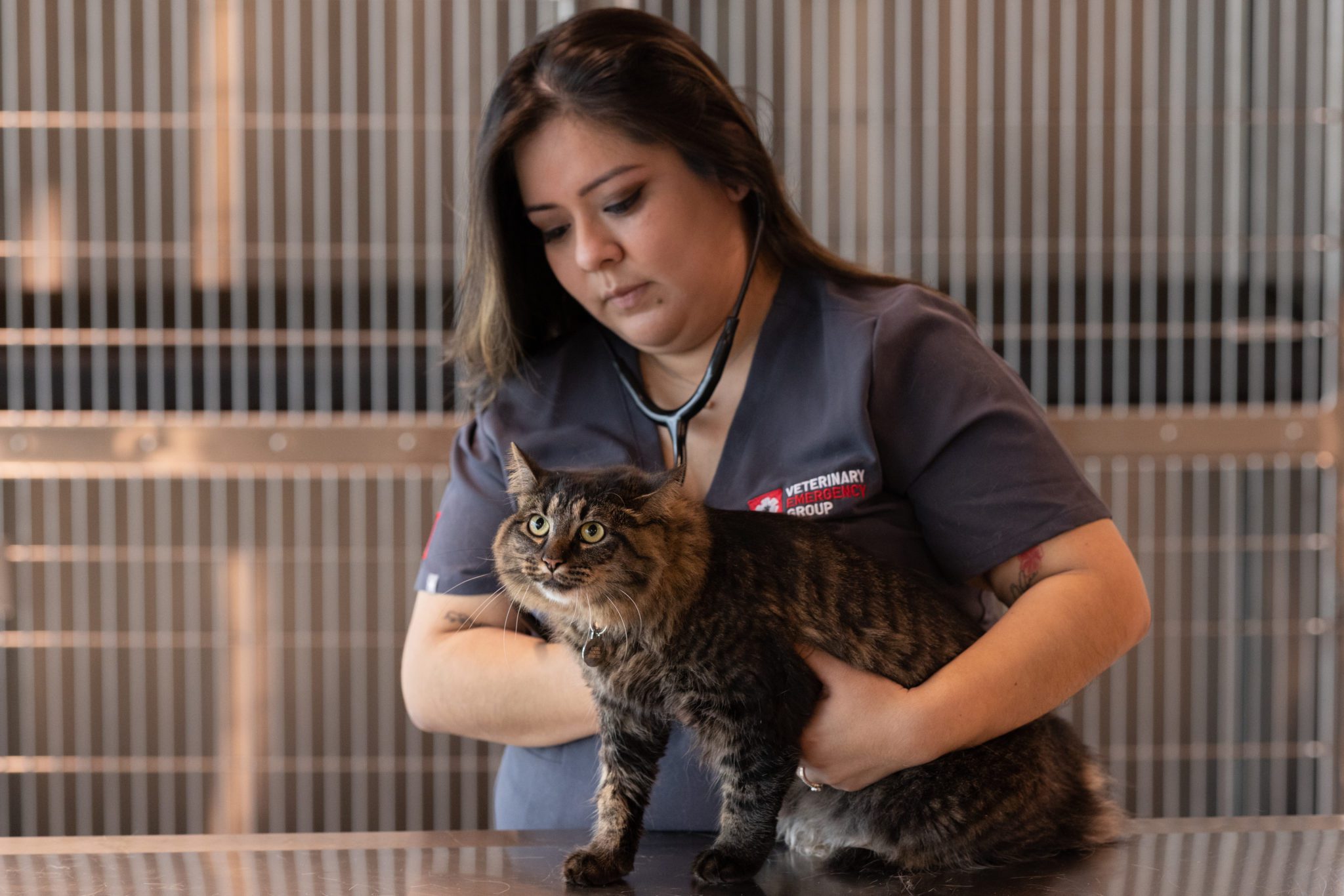
My Cat Is Drinking A Lot of Water, Should I Be Concerned?
Dr. Morgan Salazar
Call & Speak with a doctor Open 24/7, Even Holidays!
Walk in today for:
Emergencies
Point-of-Care Ultrasound
Urgent Care
X-Rays
Diagnostics + Testing
End-of-Life Care
Surgery
Treatment + Hospitalization
Hey, kitty kitty… knowing the ins-and-outs of your cat’s daily antics is part and parcel of being a pet parent. So, when you notice your little furball is gulping more water and hitting the litter box with more pee-breaks than usual, it may make you wonder if something’s up with Buttercup.
WHY IS MY CAT SO THIRSTY?
There are many things which could be making your cat extra thirsty, some more serious than others. While only a diagnosis by your vet could let you know the real cause, here are our three top reasons your cat may be drinking more water:
1. FELINE KIDNEY DISEASE
One of the most common and serious diseases to look out for in your cat is kidney disease. While manageable, it is not curable—which is why it’s so important to detect it early and start therapies to slow its progression.
Some signs of kidney disease in cats include:
- Increased thirst
- Decreased appetite
- Increased urination
- Muscle or weight loss
- Lethargy
- Vomiting
- In severe cases, pale gums (anemia)
Visit your vet for a clear diagnosis and treatment.
2. HYPERTHYROIDISM IN CATS
A serious disease, Hyperthyroidism in cats can affect their hearts. Believe it or not, something to keep your eye out for is if your older cat suddenly starts acting like a kitten again. Other symptoms include:
- Increased appetite
- Significant and quick weight loss
- Unkempt coat and thickened nails
- Vomiting and/or diarrhea
- Increased thirst
- Hyperactivity and vocalizing
Your vet will likely do some bloodwork to help make a diagnosis and discuss treatment options, if needed.
3. DIABETES MELLITUS
Another serious cause of increased thirst and urination in cats is Diabetes Mellitus. Diabetic cats are likely to be overweight and unable to regulate their blood sugar. Keeping an ideal weight is one of the best ways to prevent the onset of diabetes in your kitten.
Cats with diabetes are typically given insulin injections and their urine and blood sugar levels are closely monitored. Bring your cat to a vet ASAP to avoid the risks of diabetes—it should never go untreated or unmanaged.
OTHER REASONS WHY YOUR CAT IS DRINKING SO MUCH
Those are our top three, but there are other not-so-concerning reasons why your cat is hitting up the water bowl more often.
Changing from wet cat food to dry
A dry food switch up can throw a cat off their water intake routine. Cats with a wet food diet take in a lot more moisture than those that eat dry food. So, if your feline friend has made the switch to dry food, it’s normal to make up for the loss of moisture by drinking more water. This is one cause of increased thirst that does not necessarily result in increased urination.
Is your cat reacting to the heat?
Your cat may be drinking a lot of water due to hot weather. Instinctively, your cat will lap up water when in a warm or hot environment. It’s the purr-fect beverage for a summer day! But beware: increased thirst is normal in hot weather, as long as it isn’t associated with heatstroke. Watch out for these signs of heatstroke in your cat:
- Panting/abnormal breathing
- Restlessness
- Red or pale gums
- Inability to rouse, weakness, or collapse
- Vomiting
- Abnormal mentation
- Unsteady gait
- Tremors or seizures
- Drooling
If your cat isn’t experiencing any of this and is simply more thirsty, heatstroke is less likely the cause. However, we recommend calling a vet if you’re concerned or unsure.
VEG IS HERE FOR YOU (AND KITTY, TOO!)
Concerned about your cat drinking more water than usual? Don’t sweat it. If it doesn’t resolve on its own after a few days, plan a visit to the vet.
VEG has locations all over the country, with emergency vets who are available 24/7 to help you solve the case of your thirsty purrbaby. Your cat will be seen right away and you can stay by their side through all phases of treatment.

